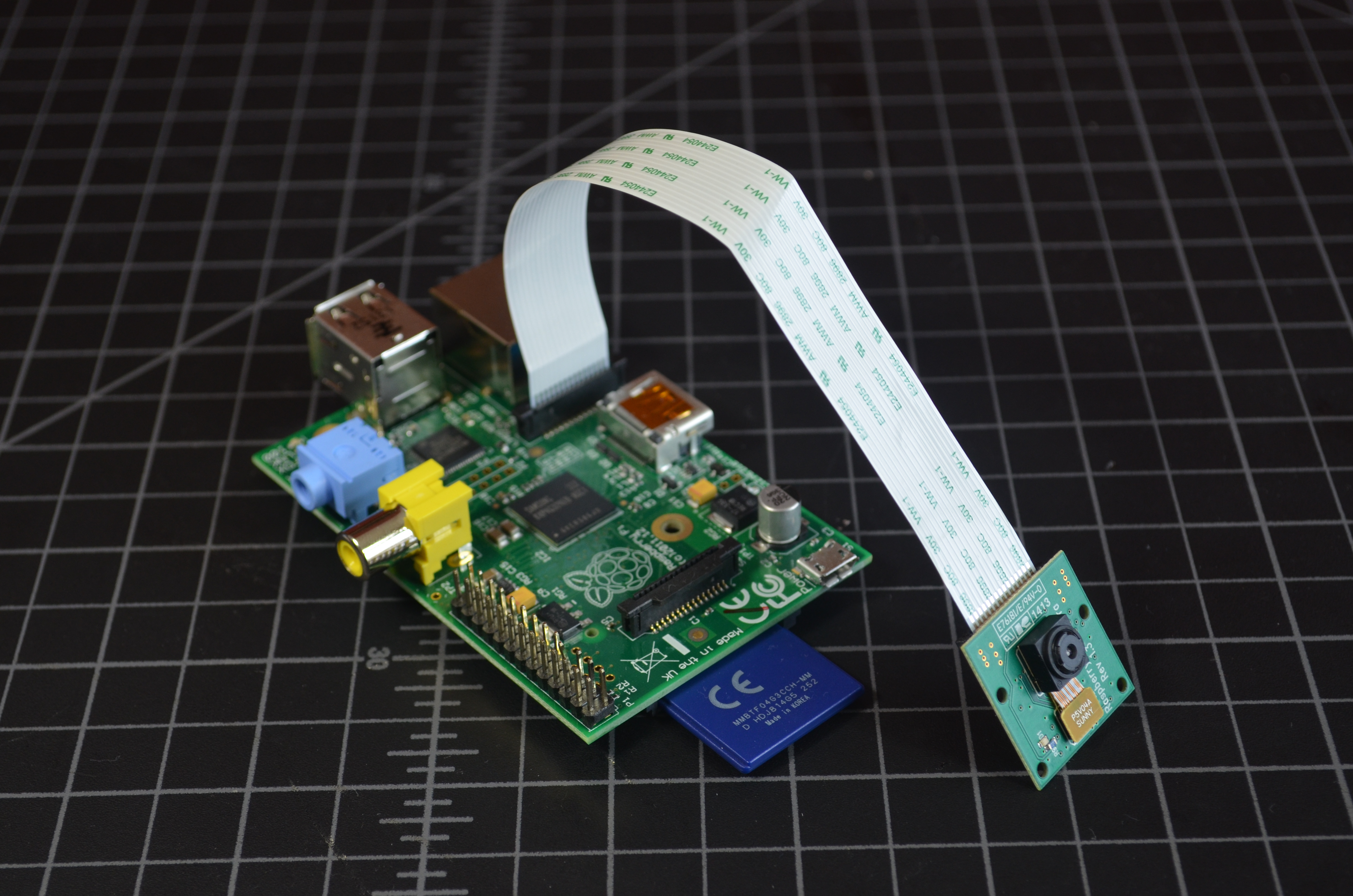The Raspberry Pi camera is a must-have accessory for your Pi. This skill builder covers the hardware, software, and highlights a few command-line arguments for raspistill to get going with the camera.
Currently there are two slightly different camera modules that connect to the Pi’s on-board CSI (Camera Serial Interface) connector. The Pi Camera Module is the baseline; it’s a 5-Megapixel includes an IR filter in it’s optics. The Pi Noir camera lacks the IR filter –making it ideal for low-light projects– and boasts a black PCB, not green.


















